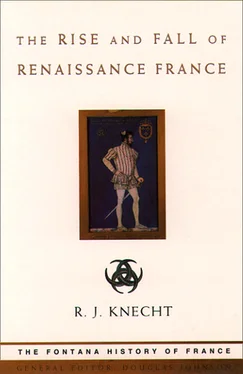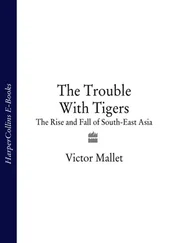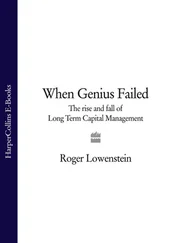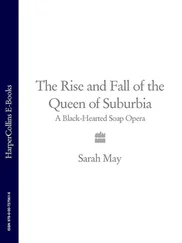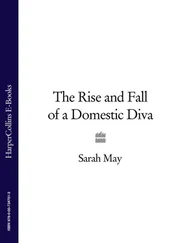The closing years of the Middle Ages witnessed two important social changes in the French countryside: a reduction in the wealth and authority of the seigneur, and the rise of a village aristocracy. During the period of agricultural recovery the seigneur had been obliged to make concessions to his tenants: new leases laid down precisely their obligations to the seigneur. By 1500 serfdom had all but disappeared. However, as the demographic rise created land hunger, the seigneurs tried to back-track on concessions, usually without success. At the same time, their authority was being eroded by the crown. A long series of royal enactments rode roughshod over local customs. The king’s judges heard appeals from decisions taken in the seigneurial courts and pardons were often granted by the crown. Another blow to seigneurial prestige was the responsibility assigned to most village communities to allocate and collect the main direct tax, the taille.
The peasantry, too, underwent a significant transformation in the century after 1450. At the top of their social scale were the fermiers or coqs de village , who frequently acted as intermediaries between the seigneur and the rest of the peasants. With at least thirty hectares at his disposal, the fermier could produce in a year more than he needed to feed his family and pay his dues to the seigneur. The surplus enabled him to set up as a grain-merchant or cattle-breeder. He lent tools, seed and money to less fortunate peasants and offered them seasonal work or artisanal commissions. At the same time, the fermier collected leases, levied seigneurial dues and monopolized positions of influence in the village or parish. The rise of this village aristocracy did not affect the whole of France. The west, for example, was hardly touched by it; yet it was a development of great importance for the future.
Urban society was more varied, open and mobile than rural society. For one thing, it was continually being renewed: the death rate in towns was higher than in the countryside because of overcrowding and poor standards of hygiene. Even a mild epidemic could decimate a town, so that a regular flow of immigrants was essential to maintain and increase its population. Such incomers might include apprentices, journeymen, domestic servants, wet-nurses, students and clerics. They would converge on a town each day from the rural hinterland looking for a better life and perhaps opportunities of social advancement. Beggars came expecting more effective alms-giving, and the rural poor looking for work, when the rise in population reduced the chances of employment on the land. The number of immigrants could be huge. At Nantes, for example, the population might jump in one year from 20,000 to 30,000. Most immigrants helped to swell the ranks of the urban poor which remained vulnerable to any famine.
Contemporaries tended to divide urban society into two groups: the aisés , or well-to-do, and the menu peuple , or proletariat. The reality, however, was more complex. The well-to-do were themselves divided between merchants and office-holders. In towns like Bordeaux or Toulouse, which were important trading centres as well as having a parlement, these two groups were fairly evenly balanced, but in Lyon, where trade was all-important, merchants were pre-eminent. They lived in comfortable town houses and added to the profits of their trade the revenues from their estates in the neighbouring countryside. In towns which were primarily administrative centres, the office-holders were preponderant. They were often as rich as merchants, from whose ranks many of them had risen. The core of urban society consisted of artisans and small to middling merchants. They worked for themselves, served in the urban militia, paid taxes, participated in general assemblies of the commune, and owned enough property to guarantee their future security. Artisans were mainly of two kinds: those who employed large numbers of workmen and those who employed no labour other than their own families.
The lower stratum of urban society – the menu peuple – consisted of manual workers, who were excluded from any share in local government and lived in constant fear of hunger. They included journeymen, who were paid in money or money and kind, manoeuvres (paid by the day) and gagne-deniers (paid by the piece).
Whereas we tend to divide society into groups according to their place of residence, occupation or wealth, Frenchmen in the early sixteenth century used quite different criteria. They classified people, great and small, rich and poor, into one of three estates: clergy, nobility and third estate, which were regarded as divinely ordained and permanently fixed. Each estate had its distinctive function, life-style and privileges, which were acknowledged in both law and custom. Social peace rested on respect for this sacred hierarchy, yet the possibility was admitted that merit and/or wealth might enable an individual or family to pass from one estate into another.
Of the three estates, the most clearly defined was the clergy, whose members had to be ordained or at least to have taken minor orders. It had its own hierarchy and code of discipline. At the top were the archbishops, bishops, abbots and priors. Then came the canons of cathedrals and collegiate churches, and below them the great mass of parish priests, unbeneficed clergy, monks, friars and nuns. In terms of wealth the gulf between a prelate and a humble parish priest or curé was enormous. The bishop often disposed of large temporal revenues. Thus the bishop of Langres was also a duke, the seigneur of 100 villages and he owned seven châteaux. Seigneuries were also held by cathedral chapters and collegiate churches. By contrast, the humble curé was often desperately poor. The dîme or tithe paid to him by his parishioners was so meagre that he was often obliged to run a small business on the side or to serve as the seigneur’s agent in order to make ends meet. Theoretically, under the Pragmatic Sanction of Bourges (1438), bishops and abbots were elected by their chapters, but in practice the church had difficulty resisting the demands of royal patronage. When the crown did not directly dispose of major benefices, elections were often disputed and the crown had to act as arbiter. Many lesser benefices were in the gift of a patron, ecclesiastical or lay. The secular clergy may have numbered 100,000, made up of about 100 bishops, many suffragan bishops and canons, about 30,000 parish priests and a huge crowd of unbeneficed clergy. The regular clergy cannot be quantified but was obviously substantial: there were 600 Benedictine abbeys, 400 mendicant houses, more than 100 commanderies of St John and 60 charterhouses.
The second estate, or nobility, was widely envied for its prestige and life-style. The noble condition was identified with perfection, while juridically and politically it implied a special status. Heredity was essential to the concept: a nobleman was born rather than made. Many nobles flaunted pedigrees going back to ‘times immemorial’. Yet it was also possible for a nobleman to be created. The king could ennoble someone who had served him well. At first this was an exceptional favour, but in the fifteenth century the holders of certain offices (for instance royal notaries and secretaries) were automatically ennobled and the practice spread to other offices. This development was accompanied by the widespread acquisition of seigneuries by office-holders. Some nobles simply usurped their status by ‘living nobly’ (i.e. avoiding any business activity), holding a public office, fighting for the king, owning a fief or seigneurie and living in a house large enough to be a manor. But a false nobleman had to ensure that his name was dropped from the tax rolls over a long period so that, if his claim to tax exemption was challenged, he could summon witnesses who would testify that his family had lived nobly for as long as anyone could remember. It is impossible to quantify the nobility exactly, but it may have numbered between 120,000 and 200,000.
Читать дальше
